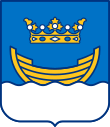This article needs additional citations for verification .(October 2021) |

Helsinki University Museum is the museum of the University of Helsinki.
The museum was located until June 2014 in a building called Arppeanum on Snellmanninkatu off the north-east corner of Senate Square. Museum's new main exhibition opened in Helsinki University Main Building in March 2015. [1]
